The tips for dust removal during the Spring Festival are revealed, keep one for every family!
[Life Circle] Little New Year's Cleaning: Range Hood Wars
The tips for dust removal during the Spring Festival are revealed, keep one for every family!
It's that annual spring cleaning season again! Does the thought of it give you a headache? Shi Guo has thoughtfully compiled some cleaning tips for the hardest-hit areas—the kitchen, living room, bathroom, and balcony. Using just the right ingredients, you can easily blast away stains! Cleaning is simple!kitchen:
Range hood: 3-5 drops of dishwashing liquid + 50ml of vinegar
Remove the range hood impeller and soak it in a basin of warm water mixed with 3-5 drops of dishwashing liquid and 50 ml of vinegar for 10-20 minutes. Then scrub it with a clean cloth. Also clean the outer casing and other parts with this solution. This method is gentle on human skin and does not corrode components. The surface retains its original gloss after cleaning.
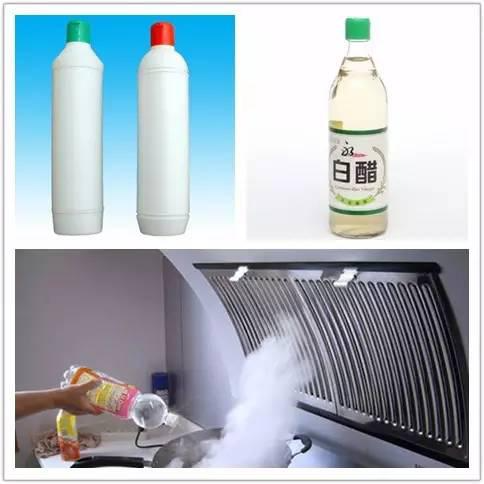
stove surface
While the stove is still warm after cooking, wipe it with a damp cloth and soapy water or baking soda to easily remove stains. Then soak the cleaning cloth in beer for a while, then wipe the stubborn stains on the kitchen counter and utensils, and they will be as bright as new!
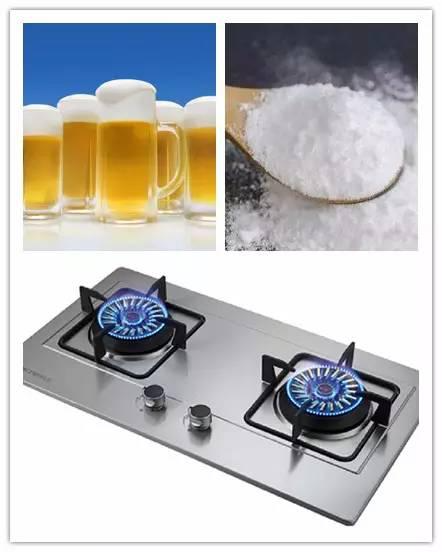
Kitchen tiles
First, spray the wall with detergent and wait for the oil stains to dissolve before wiping it away. After cleaning, apply a layer of dishwashing liquid on the wall so that it can be wiped clean next time.
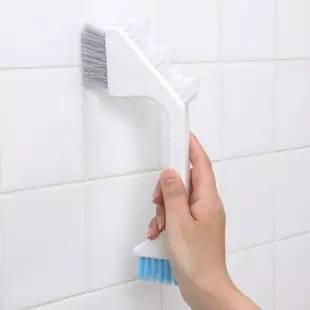
Refrigerator defrosting
Defrost: First cut off the power supply of the refrigerator, use the defrost shovel provided with the refrigerator to scrape off the frost, and then wipe off the water in the refrigerator.
Remove odors: Put discarded grapefruit peels, apples, tea leaves, and lemon slices in the refrigerator and the odor will be naturally removed.
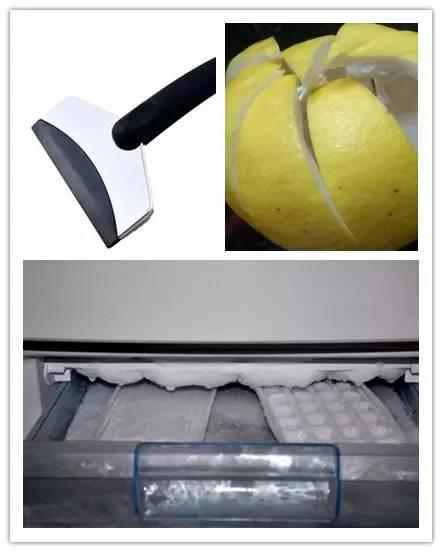
washing machine
First, soak a towel in 200ml of rice vinegar and place it in the washing machine to spin dry. Then, leave it in the washing machine for an hour to allow the vinegar to soften the dirt. Then, turn the washing machine to the highest water level and add the dissolved baking soda. Run the washing machine for five minutes, then turn it off and let it soak for another two hours.
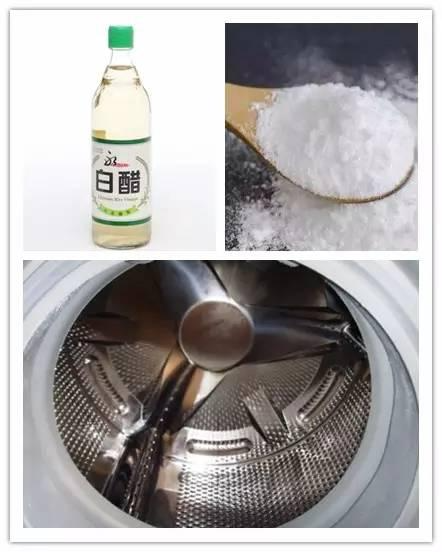
Micro-wave oven
Pour lemon juice, water and detergent into a bowl, put the bowl in the microwave and heat it in the microwave for about 2 minutes. At this time, there will be water droplets on the inner wall. Take out the bowl and wipe the inner wall with a wet and dry cloth respectively.
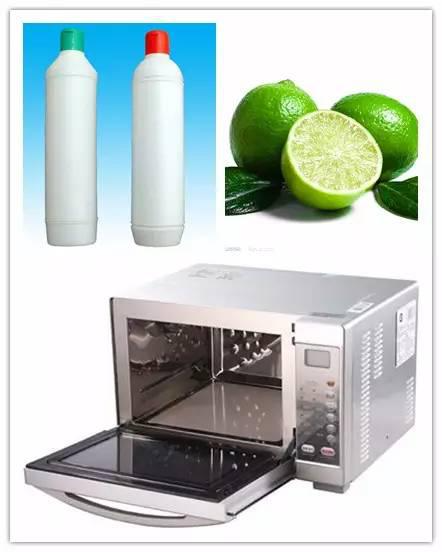
Ceramic cups, ceramic pots
Use a fine cloth dipped in a small amount of toothpaste and gently scrub it. It will clean quickly without damaging the porcelain surface. Kitchen walls often become sticky due to the smoke, and you can easily wipe it with the soft part of the bread.
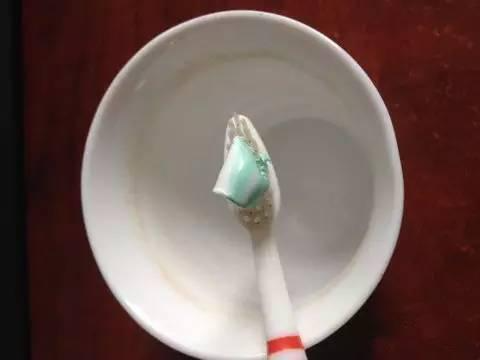
dining table
For those circles of stains on the dining table: just sprinkle some salt and a few drops of salad oil, and you can brush them off.
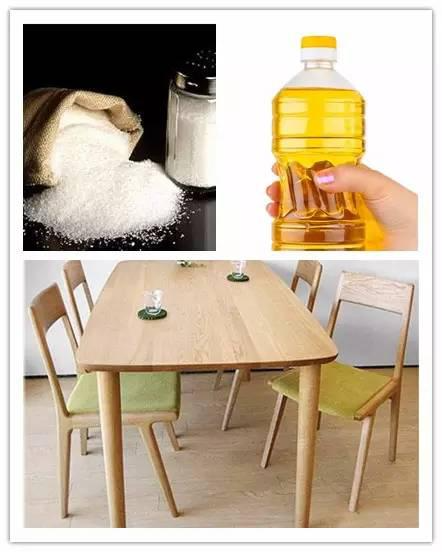
Living room, bedroom and balcony:
carpet
Soak the broom in soapy water and sweep the carpet, keeping the broom moist, then sprinkle some fine salt on it, sweep it again, and finally wipe it with a dry rag. When cleaning the carpet, if conditions permit, wash the synthetic carpet with water and let it dry.
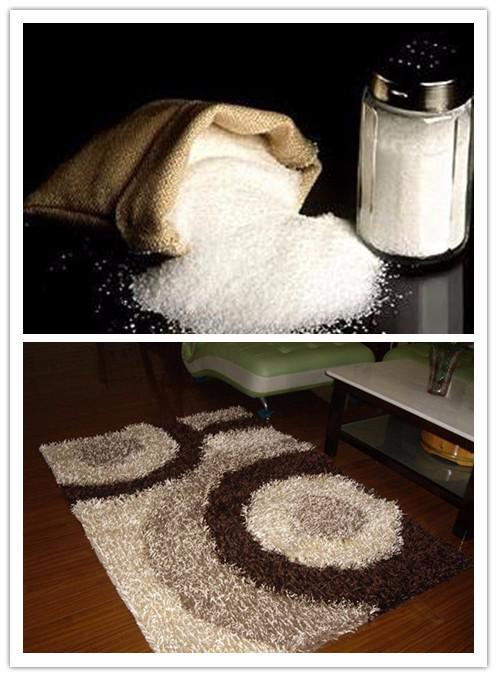
air conditioner
Casing: Wipe off the dirt with a soft dry cloth, or scrub with warm water, but do not scrub the casing with hot water or flammable substances.
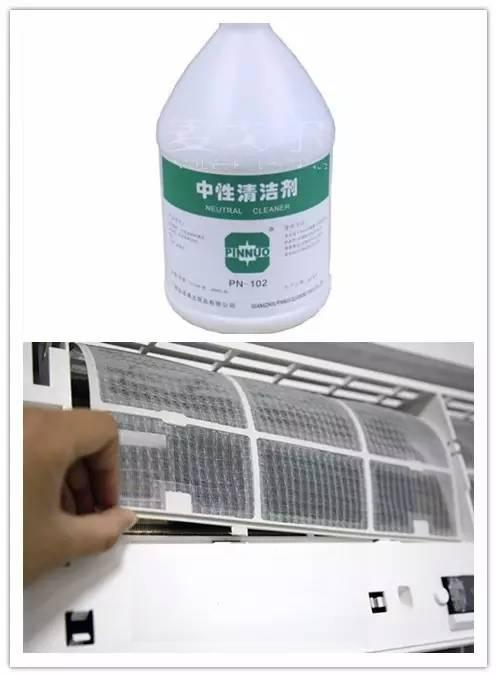
Filter: If the filter is lightly dusted, gently tap it or use an electric vacuum cleaner to remove the dust. If it is heavily dusted, clean it with a neutral detergent and let it air dry naturally. Do not expose it to the sun or tumble dry it.
sofa
Fabric sofa: For juice stains on the sofa , mix 1 teaspoon of baking soda with water, then wipe it lightly with a cloth, and the stains will fade.
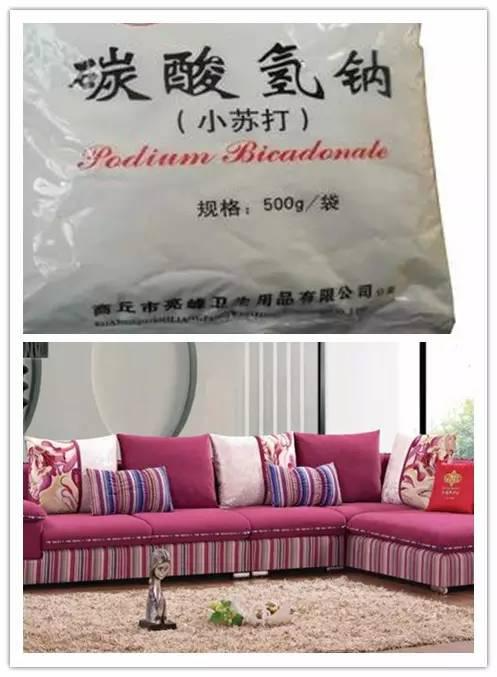
Glass
Wipe it with a damp cloth dipped in a little white wine. The glass will be clean and bright after wiping.
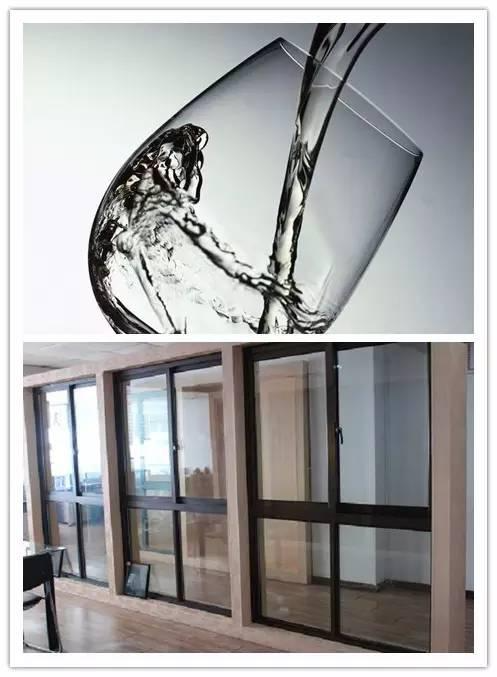
furniture
Soak a soft cloth in cold strong tea and use it to wipe tables, chairs and other furniture to make them look bright and new.
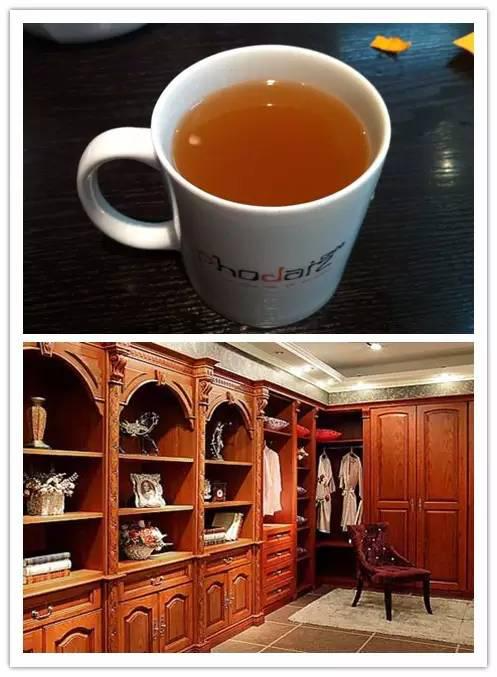
Screen window
Newspaper cleaning method: Wet old newspaper with a rag and stick it on the back of the screen. After 5 minutes, remove the newspaper from the screen and you will find that it is covered with dust and stains.

Glue behind the hook
When removing adhesive hooks, wipe the remaining adhesive with vinegar to remove it. Alternatively, heat it with a hair dryer and then scrape it off.
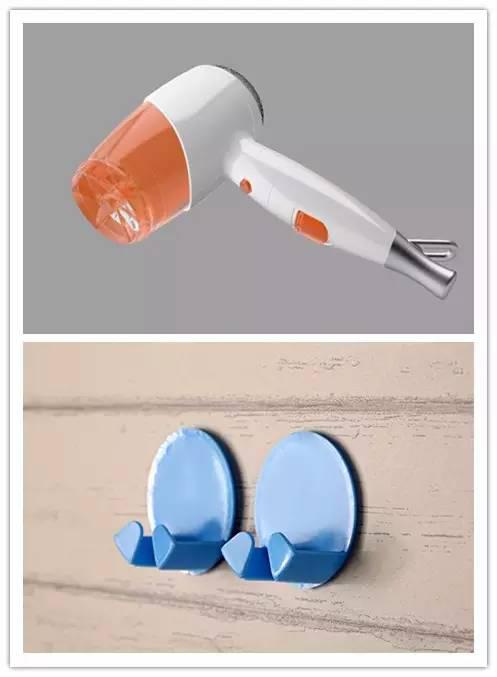
bathroom:
Sewer odor removal
Cut grapefruit, tangerine, and orange peels into small pieces and place them in a pot with water. Bring to a boil over high heat, then continue to simmer over medium heat for 10 minutes. Remove the peels and slowly pour the hot water down the drain. Make sure the drain pipe is made of heat-resistant material to prevent burns.
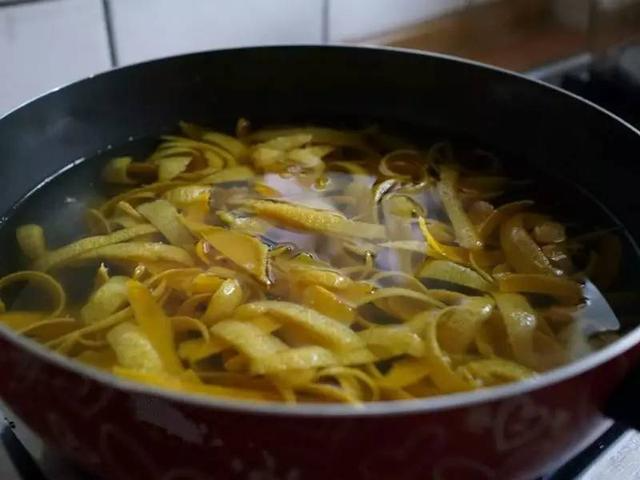
Water marks on water pipes
Use the peeled potato to wipe the fleshy side and it will be shiny again!
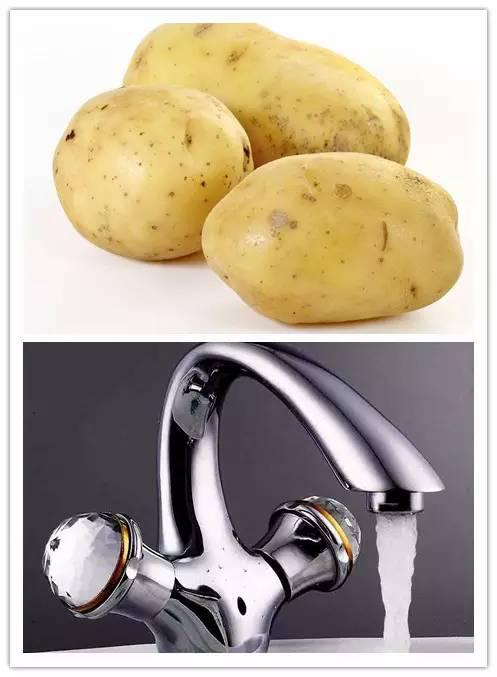
Shower head
Is your showerhead clogged? Soak it overnight in a plastic bag filled with water and vinegar. It should clear the blockage.
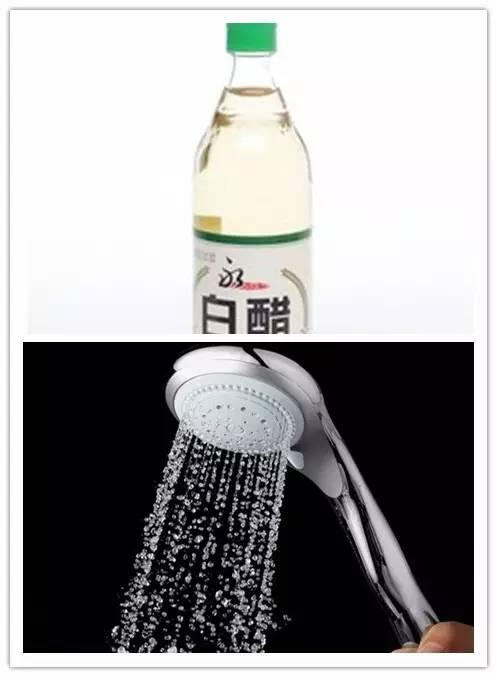
Cleaning order:
From a horizontal perspective, different spaces should have a certain order.
Kitchen→Bedroom and Living Room→Bathroom
The kitchen is the most challenging area to clean first, as once you've cleaned it, everything else seems easy. Next up are the bedrooms and living rooms, which primarily focus on home maintenance and renovation. Finally, the bathroom, which requires frequent visits, is wise to leave for last.

From a vertical perspective, cleaning also has an order.
From top to bottom, from inside to outside
In terms of space, the order should be from top to bottom, so as not to wipe the floor and the ceiling dust will fall and make it dirty; when wiping the cabinet, it should be from inside to outside, so as not to make the outside dirty by the dust inside. After determining the general direction, you can start to arrange the cleaning work.
Three taboos of cleaning:
Just wipe with a damp cloth
Different types of dirt require different wiping methods; a one-size-fits-all approach is not recommended. Dry dirt should be wiped with a dry cloth; using a wet rag will have the opposite effect. For example, dust accumulated on furniture and appliances, dirt trapped in window crevices, etc., should be removed with a duster or dry rag; using a wet rag will cause the dirt to adhere to the surface.
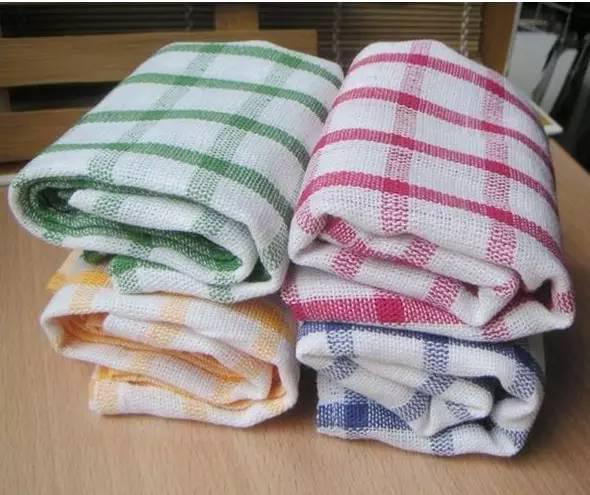
Pour the cleaner directly onto the dirt
Many people are accustomed to pouring detergent on grease stains and then wiping vigorously. Although this method is effective, it is quite laborious and time-consuming, and sometimes may scratch the surface of the appliance. The detergent should be dissolved in hot water first, which can increase the detergent's penetration rate into the stain by 5 to 10 times.
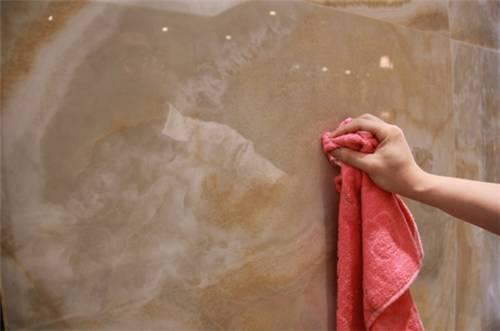
Use only one cleaning agent
Cleaners should also be used according to the type of dirt. For acidic dirt such as oil, an alkaline cleaner is suitable. Conversely, for alkaline dirt such as soap scum and scale, a cleaner containing acidic ingredients such as citric acid can be used.
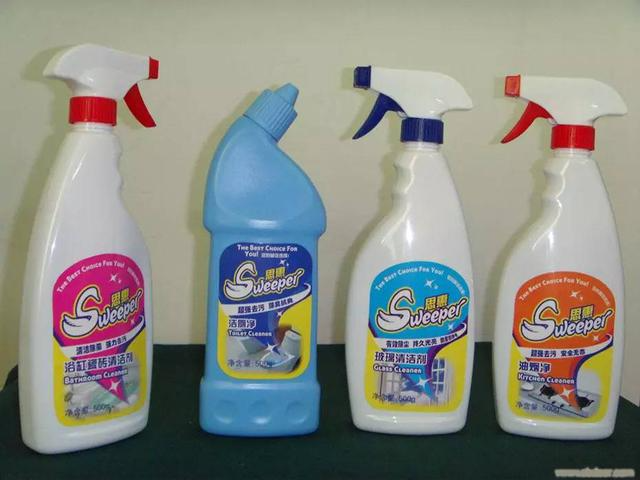
The New Year is coming soon. Remember to learn the little tips here when cleaning and make your home clean to welcome the Spring Festival!

Organizer: Weipin Digital Communication
Editor-in-Chief: Chen Buwen, Deputy Editor-in-Chief: Jiang Daxiong, Director: Han Churui | Editor: Li Caihong
: Traditionally, a thorough cleaning is a must before the Lunar New Year, symbolizing "saying goodbye to the old and welcoming the new." M believes that thorough cleaning shouldn't be limited to the Lunar New Year; it's also important to do it regularly, especially in the kitchen, as "diseases come from the mouth."
M has compiled some kitchen cleaning tips to share with everyone:
1. Cleaning the range hood. When it comes to kitchen cleaning, the most daunting task is the range hood. While commercially available cleaners can inevitably damage your hands, it's cheaper and less expensive to DIY with familiar ingredients. Mix 2-5 ml of dishwashing liquid with 50 ml of vinegar in a basin of hot water (keep it above 60°C). Carefully remove the fan blades and soak them in water for 15-20 minutes. Then, scrub them with a brand new pair of stockings for a thorough, scratch-free clean . After washing and drying, apply a layer of glue to the blades and reattach them after they're completely dry. Remove the glue the next time you clean them for easier cleaning.
Tips: Never disassemble the range hood for cleaning , because the range hood is a high-speed rotating machine that requires very high balance. If the balance is destroyed, it will easily cause increased noise and vibration, and in severe cases it may even cause malfunction.
2. Clean the stove. Boil lemon or orange peels in water. Once the water cools, dampen a cloth with it and you can easily clean the dirt on your gas stove. You can also apply sticky rice water to the stove . Once it dries, the rice water will form a crust that will bind the grease together. Simply clean the rice water crust to easily remove the dirt!
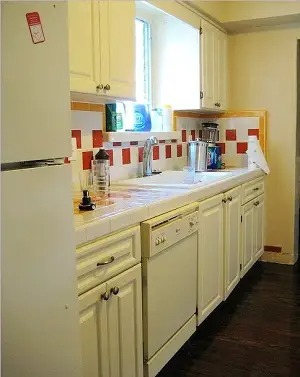
3. Cleaning kitchen tiles. Tiles are easy to clean, but thick layers of grease can be quite annoying. To clean tiles, cover them with toilet paper, then spray a small amount of detergent on them and let the paper absorb. After a while, most of the grease will float to the surface. After 10 minutes, remove the paper and wipe thoroughly with a cloth dipped in clean water.
4. Cleaning dishes. When M was little, her mother taught her to save rice and noodle water for washing dishes. This was both economical and safe. While the rice water recipe is a household name, there's another method: scrubbing with used tea leaves . This method quickly removes grease without the worry of chemical residue like detergent.
5. Clean your cutting board. Cutting boards are also a breeding ground for bacteria, so keep raw and cooked food separate, as well as meat and vegetables. To clean your cutting board, first lay a paper towel on it, then pour a mixture of vinegar and warm water on it. After 5-10 minutes, remove the paper towel and rinse with clean water . This not only removes dirt and odors, but also has a sterilizing effect!
6. Clean kitchenware. Mix water and baking soda to make baking soda . Use a rag to wet the mixture and wring it out to remove dirt from gas stoves, ovens, thermoses, faucets, etc. Alternatively, use a soft cloth dipped in a small amount of toothpaste to repeatedly scrub the surface to restore its shine.
7. Cleaning stainless steel basins. Many people choose to scrub with steel wool, but this can easily scratch the surface, and scrubbing with a dishwashing sponge won't remove stubborn stains. Instead, use leftover radish or cucumber scraps, dip them in detergent, and rinse with water . Alternatively, you can use vinegar !
8. Cleaning wooden furniture: Add an appropriate amount of vinegar to clean water and wipe the wooden furniture with a rag to remove stains. Alternatively, soak a clean rag in expired milk, then wipe the wooden furniture, and finally wipe it with clean water.
9. To clean copper utensils, you can wipe them with lemon juice and a little fine salt .
10. To clean glassware and pottery, you can use a mixture of vinegar and salt to wash them.
11. Cleaning of plastic baskets and basket nets: Use an old toothbrush dipped in vinegar or detergent to gently scrub the mesh.
Tips: Many housewives use alkaline water when cleaning the kitchen, but it can easily damage the skin. M found that her hands became extremely rough after using it only once T_T… When there is oil on your hands after cleaning, you can soak your hands first, then put a pinch of cornstarch in your hands, rub them gently for one minute and then rinse with water.
If you guys have any good kitchen cleaning tips, why not share them with everyone?

1. Tile Cleaning:
When tiles are heavily stained with grease, cover them with toilet paper or paper towels. Spray detergent on them and let them sit for a while. This prevents the detergent from dripping everywhere, and the grease will float to the surface. Remove the toilet paper and wipe once or twice with a clean cloth and water. For stubborn stains, use a cotton cloth instead of toilet paper.
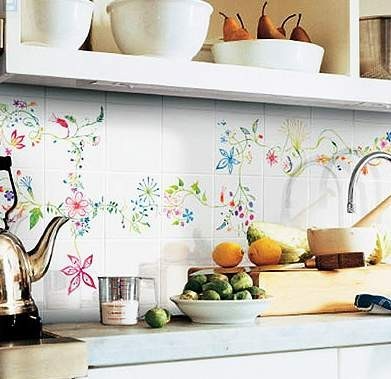
The cabinet sink is used for both vegetable and dishwashing, and is easily contaminated with grease from the dishwashing water. If you don't have a dedicated sink cleaner, sprinkle a little salt on the greasy areas, then wipe them with used plastic wrap. Rinse with warm water several times to keep the sink looking as bright as new. You can prepare a small brush or toothbrush to clean the corners and drains of the sink with fine salt, soapy water, and detergent. It's also best to soak the drain cover in warm soapy water for 20-30 minutes to achieve the desired cleaning effect.
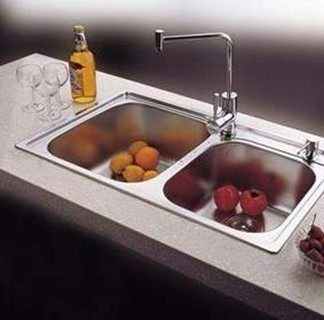
is the most difficult appliance to clean in the kitchen. First, empty the oil container. Then soak the container in warm water with soapy water or a neutral detergent for about 20 minutes. If the stain is stubborn, soak it for 40 minutes. If the oil filter is lightly stained, soak it in warm water, then rinse and dry it. If the stain is more severe, soak it along with the oil container. Gas stoves are generally cleaned after cooking. While the stove is still warm, wipe it with a damp cloth and soapy water or baking soda. Wait until the stove has completely cooled before wiping, as grease stains and rice water spills from cooking are difficult to clean.
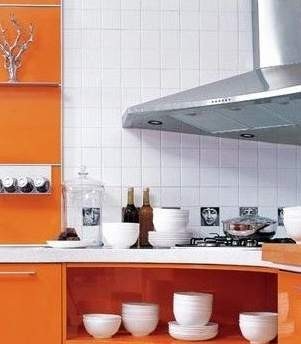
For glassware used for extended periods, such as oil bottles, if lightly grimed, use tea leaves to clean them. For printed glassware, use tissue paper and avoid using detergent to prevent corrosion. If the grease is thick and has an odor, crush an eggshell and place it in a bottle. Add a small amount of warm water, cover tightly, and shake the bottle up and down for about a minute to remove the eggshell residue. Rinse thoroughly with clean water. Cutting boards can easily develop odors after use. Household vinegar can effectively clean odorous cutting boards. Mix two tablespoons of vinegar with 200 ml of warm water and place on a paper towel-lined cutting board for 15 minutes. This will remove dirt and odors, and it also has a certain antibacterial effect.
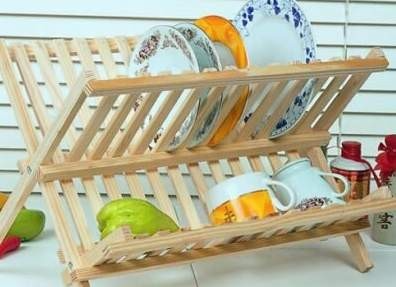
5. Microwave Cleaning:
Microwaves are prone to grease buildup after extended use. Place a large bowl of hot water in the oven and boil until steam is generated. Then, use a double-action scouring pad dipped in dishwashing liquid to clean any grease inside. Dry with a damp and then dry sponge.
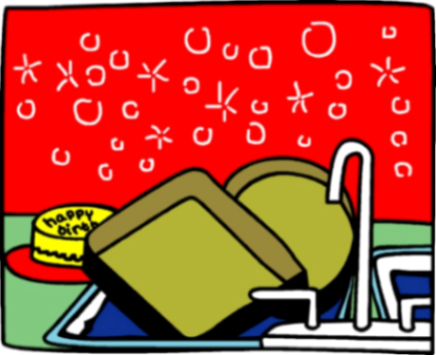
6. Refrigerator Cleaning
: To brighten the refrigerator's exterior, use furniture wax spray. Use a toothbrush to clean the delicate crevices around the door. Wipe the interior with diluted bleach for both a clean and sterilizing effect.
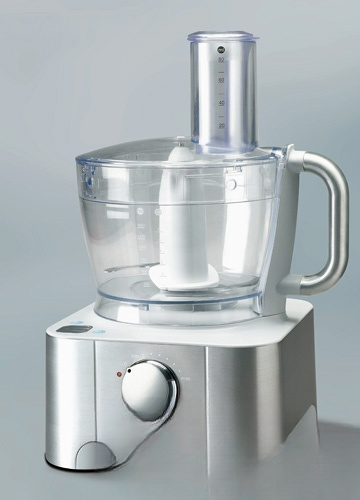
Juicer or Soymilk Maker Cleaning
: Many households use juicers and soymilk makers, some daily. However, cleaning both can be inconvenient and difficult.
After juicing or making soymilk, immediately clean the blades, filter, and other parts of the machine with a scouring pad or a used toothbrush. Avoid allowing fruit or soy residue to accumulate, as this will complicate subsequent cleaning.
Fill a blender container with 1/3 warm water and dish soap, plug in the power cord, and blend for 30 seconds, then rinse with clean water. If your blender is designed for mincing meat, break up leftover steamed buns into crumbs and blend them in the blender.
This will effectively absorb any scraps of minced meat. The plastic cups of juicers and soymilk makers will yellow over time with frequent use. This problem can be cleaned by rubbing a small piece of dough with a little detergent.
Cleaning the outer casing of a juicer or soymilk maker is relatively simple; simply wipe it with a rag. Do not rinse with water or scrape with hard objects. Do not immerse the base of a juicer or soymilk maker in water to avoid damaging the insulation of the motor.
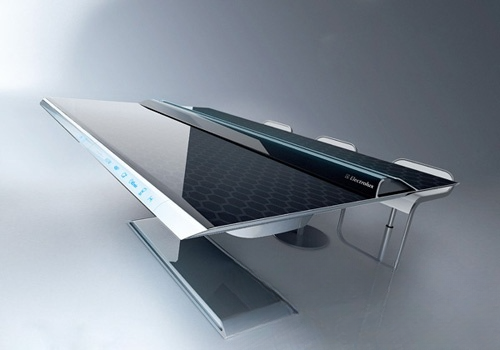
Cleaning an Induction Cooker:
After using an induction cooker for a period of time, stains easily accumulate on the cooktop. If not cleaned promptly, stubborn oil stains will become more difficult to remove.
Unplug the cooker and allow the cooktop to cool completely. Clean the exhaust fan and vents inside the induction cooker to ensure proper ventilation and prevent overheating. This area can be cleaned with a soft, dry cloth dipped in rubbing alcohol, but wait until the alcohol has evaporated before using the induction cooker. If the vents are heavily dusty, clean them with a soft toothbrush or cotton swab; never rinse with water.
To clean the induction cooktop, use scouring powder or a neutral detergent, then wipe with a damp cloth. If heavy buildup occurs, wipe with toothpaste, then wipe with a soft, damp cloth. Be careful not to use cold water on the cooktop immediately after use, as this can cause the hot and cold temperatures to shock the surface and crack.
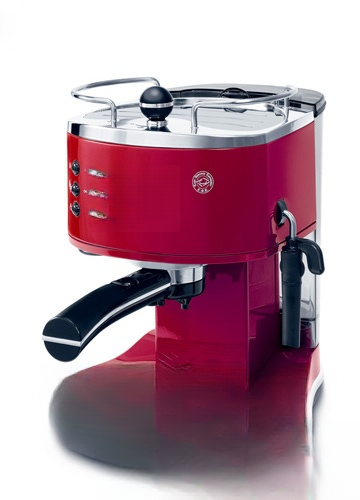
Coffee machine cleaning:
Coffee is rich in minerals, and accumulated minerals can clog the coffee dispenser. If you prefer to use spring water for coffee or use it frequently, it's best to clean it two to three times a month. Make sure the coffee machine is turned off and not hot. Wipe the exterior with a damp cloth, sponge, or soft scouring pad. Never use abrasive scouring pads or steel wool, as these can scratch the exterior. Do not immerse the coffee maker directly in water. Instead, remove the filter, percolator, carafe, and cap separately and clean them with warm water and detergent. If necessary, use a soft-bristled toothbrush. Clean the inside of the coffee maker. Pour 5 tablespoons of white vinegar into 5 cups of water. Then brew coffee as usual, allowing the vinegar-mixed water to drip through the filter and into the carafe. Repeat this process twice. Finally, brew the coffee again with 5 cups of water to ensure a thorough clean.
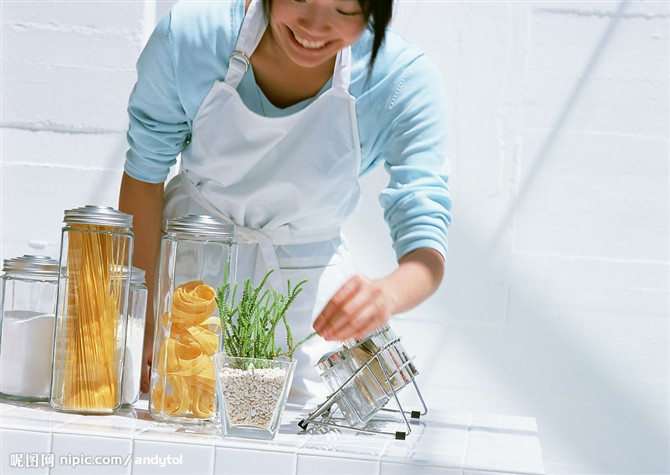
Give your kitchen a cleanse.
1. Pots and pans at home will accumulate a thick layer of grease over time, and scrubbing with detergent is time-consuming and laborious. Here's a quick and effective method: Place a small amount of water in a pot, place the lid upside down, and bring the water to a boil (you can add a little dish soap). Let the steam fumigate the lid. Once the grease turns white and soft, gently wipe the lid with a soft cloth to make it shine like new.
2. Has your refrigerator become grimy after long use? Wipe it with a sponge dipped in vinegar and a little dish soap. This not only removes stains but also has antibacterial properties.
3. Place a paper towel on the tile, spray detergent on it, and let it sit for a while, just like applying a facial mask. The detergent won't spread everywhere, and the dirt will stick to it. Simply remove the toilet paper and wipe the tile with a clean cloth and water once or twice, and you'll have a brand new look. For heavily greased tiles, place a paper towel on them overnight, or use a cotton cloth instead of toilet paper and wipe with a damp cloth.
4. Got a hard-to-remove stain on your faucet? Rub a slice of fresh lemon in a circular motion a few times. A well-hydrated orange peel is also a powerful stain remover. Rub the colored side of the peel against stubborn stains to easily remove them.
5. Soak a scouring pad in beer for a while and then wipe it against your stovetop for a sparkling clean. Alternatively, use leftover radish or cucumber scraps, dipped in detergent, and then rinse with clean water for a brilliant stain removal effect. [The following appears to be unrelated and likely a mistranslation:]
The
kitchen is where delicious food is created, but also where dirt is created. Every family needs three meals a day, and over time, kitchen grease builds up unnoticed. So how can you remove this nasty grease?
When wood in the kitchen is heavily greased, apply a solution of bleach and water to the surface and rinse with clean water the next day. Alternatively, add some vinegar to water and wipe it against wooden furniture; the latter method is more suitable for less greasy wood. If aluminum pots and pans are grimed, gently rub them with a cuttlefish bone to create a shiny, new look.
Old stains on enamelware can be removed with a brush and a little toothpaste for effective results.
Electroplated faucets darken and lose their luster over time, and soap and detergent are not effective. The best method is to place a small amount of flour on a dry cloth and repeatedly rub the faucet. Then, wipe it with a damp cloth, and finally with a dry cloth. The faucet will shine like new.
If a kitchen knife is rusted, scrub it with a little fine sand on a potato or radish slice to remove the rust.
Grease stains on a gas stove can be removed by applying leftover hot soup from cooking noodles, rubbing it with a cloth after a while, and then rinsing with water.
Greasy stains on the kitchen floor can be effectively removed with a mop and a little vinegar. The kitchen is the most prone to grime, and most of it is greasy, making it difficult to clean. Here are some stain removal methods for different kitchen utensils.

Four Tips for Cleaning Your Kitchen
: * Floors: If your kitchen cement floor is greasy, simply mop it with a little vinegar.
* Cupboards: If cupboards or other wooden furniture aren't cleaned regularly, they can become stained with grease. Adding a moderate amount of vinegar to clean water can be very effective.
* Exhaust Fans: Over time, grease can build up on the frame and blades of exhaust fans. While cleaning with alkaline water or detergent may be effective, it often leaves your hands greasy and difficult to clean. Using sawdust is quick, easy, and highly effective.
1. Before cleaning and disassembling the exhaust fan, wash your hands and apply soap, leaving extra soap between your fingernails. Then wipe your hands clean.
2. After disassembling the exhaust fan, take some fine sawdust and use it with cotton yarn or your hands to wipe the fan until all the grease is removed.
3. After removing the grease, rinse the remaining sawdust and cotton yarn from the components with clean water. Dry them and reassemble. The exhaust fan will be as clean as new.
*Window screens: To clean greasy kitchen window screens, you can repeatedly brush both sides of the screen with a thin, heated batter. After 10 minutes, use water to remove the batter, and the grease on the screen will be clean. Alternatively, use a lint-free cloth dipped in alkaline water to repeatedly scrub the screen. Once the grease is removed, rinse again with clean water. If either method doesn't work once, repeat the original method until it's clean.
Tips for cleaning faucets
: 1. Use a soft cloth coated with toothpaste to clean the surface, then rinse with clean water. Do not use alkaline cleaners or scouring pads or steel wool to avoid damaging the electroplated surface.
2. Single-handle faucets should be opened and closed slowly during use. Double-handle faucets should not be closed too tightly, otherwise the water stopcock will fall off, causing the faucet to not be closed or stopped.
3. The water outlet typically has a foaming device (also called a bubbler; different faucets have different bubblers). Water quality issues often cause the faucet to produce less water after a period of use. This may be due to debris clogging the bubbler. Unscrew the bubbler and use clean water or a needle to remove the debris.
4. Some imported faucets have a thick electroplating finish, but this can also be harmful.
Daily Cleaning of a Microwave
Oven: While microwaves offer a lot of convenience and time-saving benefits, long-term use can pose a significant risk. What precautions should be taken when cleaning a microwave? What are some other tricks?
First, unplug the power cord.
The interior of the microwave oven, the front and back of the door, and the door opening should be cleaned with a soft cloth, warm water, and a mild detergent. Avoid using metal brushes or corrosive detergents. To clean the interior, use a cotton swab dipped in rubbing alcohol or strong liquor, as alcohol evaporates quickly and has a bactericidal effect. It's important to carefully clean the mica sheet on the right side, as this is the microwave's heating port. The turntable and turntable bracket should be removed and cleaned separately. Alternatively, they can be cleaned with alcohol or white wine, followed by repeated scrubbing with a damp cloth. If the glass turntable and collar are hot, wait until they cool before handling them.
If the microwave is heavily grimed, fill a microwave-safe container with water and heat it for a few minutes. Let the evaporated water moisten the stains inside the oven, then wipe with a damp cloth and thoroughly remove any oil or alcohol. For computer-controlled microwaves, avoid using a damp cloth to clean the membrane switch.
To remove odors, add one or two drops of vinegar to a cup of water and heat the turntable for one or two minutes. When heating foods with low moisture content, such as bread and steamed buns, place half a bowl of water nearby. This helps keep the food fresh and helps the microwave operate properly. Avoid heating foods with strong acidity or alkalinity.
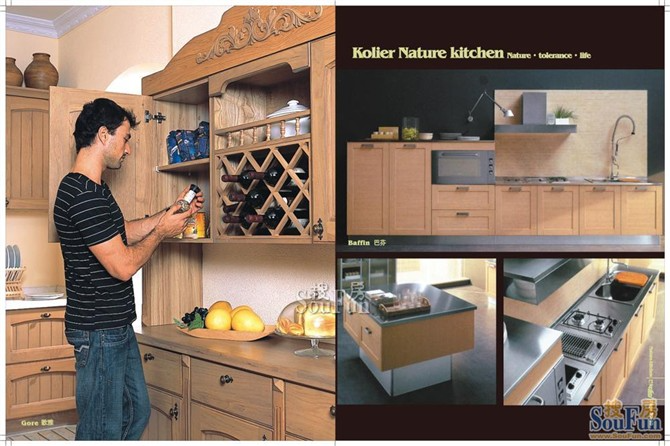 Kitchen Cleaning Tips
Kitchen Cleaning Tips: Degreasing Spray: Use commercially available degreasing sprays with a spray gun, choosing the right one based on your needs and the specific stains you're targeting.
Dishwashing Method: Apply the detergent directly to the tiles near the stove wall or the range hood. Once dry, it will form a transparent, oil-isolating film, effectively isolating and cleaning.
Oil-to-Oil Method: Use used cooking oil to first smear any long-standing grease on the range hood and surrounding tiles. Wait a few minutes before using regular cleaning methods.
Fruit and Vegetable Method: Use leftover watermelon rinds, apple cores, cucumber stems, and other items to rub grease-free areas.
Rice and Noodle Soup Method: For grease-free stovetops or LPG stoves, apply thick rice soup to the stovetop. Once the rice soup forms a crust and dries, gently scrape it with a wooden chopstick or plastic sheet to remove the grease along with the crust.
Hot alkaline water plus new washing products: dissolve a little soda ash with hot water, and add an appropriate amount of laundry detergent or detergent, and use this solution to clean the range hood or stove with heavy oil pollution.

The New Year is approaching, and it is time for another big cleaning. Among them, the kitchen is definitely a headache, with grease stains everywhere that are difficult to remove. Here, we will dedicate our professional cleaning technology to you, making kitchen cleaning no longer a hassle.
Kitchen stain cleaning methods commonly used by cleaning companies
11. Dirt on aluminum pots, basins, lunch boxes, and other tableware can be wiped with squid bones, which will instantly make them as clean as new without damaging the aluminum. If they are stained with grease, use chicken feathers dipped in water to scrub them, which is more effective than detergent.
12. Bowls, chopsticks, plates, spoons and other tableware can be washed by soaking them in tea leaves or rice water. If there are old stains, wipe them with a brush dipped in toothpaste to completely remove the dirt.
13. You can wipe the grease on the cooking utensils with the roots of onions or newspapers, and then rinse with clean water. This is because newspapers have a strong ability to absorb oil and are very labor-saving to wipe.
14. After stainless steel tableware is used, wipe it with vinegar, rinse it with clean water after it dries, and it will be as bright and clean as new.
15. If copper products such as copper pots and kettles are stained with oil, you can wipe them with lemon juice mixed with a little fine salt; if casseroles and earthenware jars are dirty, soak them in rice water, heat it, and then rinse them with water.
16. Dirt and grease often accumulate in the mesh of plastic baskets and baskets, making them difficult to clean. Use a toothbrush dipped in vinegar and soapy water to scrub them and they will be as clean as new.
17. When the chopping board is stained with grease, you can scrub it with vinegar. After it is clean, soak it in shochu diluted with hot water, and then dry it. This will both clean and sterilize it.
18. If the liquefied gas appliance is stained with grease, you can use rice soup or noodle soup to wash it, which is very effective.
19. The dirt in the teacup is difficult to clean. Use a basin of strong salt water, drop a little vinegar, soak the teacup overnight and then scrub it to save effort.
20. If there is dirt in a narrow-mouthed bottle, crush the eggshell and put it into the bottle. Shake it vigorously to allow the eggshell and bottle to rub against each other, and the stains will be removed.
1. Tile Cleaning:
Cover the tiles with toilet paper or paper towels, spray the detergent on them, and let them sit for a while. This will prevent the detergent from dripping everywhere and allow all the grease and dirt to float to the surface. Simply remove the toilet paper and wipe once or twice with a clean cloth dampened with water. For stubborn stains, use a cotton cloth instead of toilet paper.
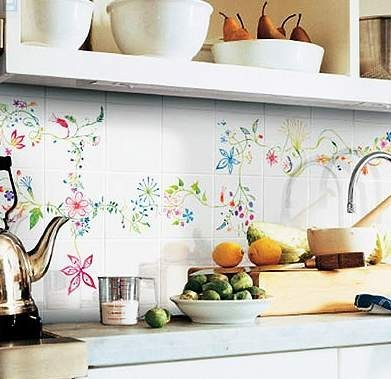
2. Pool cleaning
Sprinkle a little salt on the oily areas, then wipe them up and down with old plastic wrap, and rinse them several times with warm water to make the pool look as bright as new. You can prepare a special small brush or toothbrush to wipe the corners and drains around the pool with fine salt, soapy water, and detergent. It is also best to soak the drain cover in warm soapy water for 20-30 minutes to achieve the ideal decontamination effect.
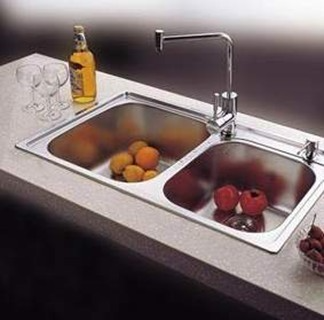
3. Cleaning the stove and cooktop
First, drain the oil from the oil container. Then soak the container in soapy water or warm water with a neutral detergent for about 20 minutes. If the oil stain is stubborn, soak it for 40 minutes. If the oil filter is lightly stained, soak it in warm water, rinse it, and then dry it. If the stain is more severe, soak it along with the oil container. Gas stoves are generally cleaned after cooking. While the stove is still warm, wipe it with a damp cloth and soapy water or baking soda. If you wait until the stove has completely cooled, oil stains and rice water spilled from cooking will be difficult to clean.
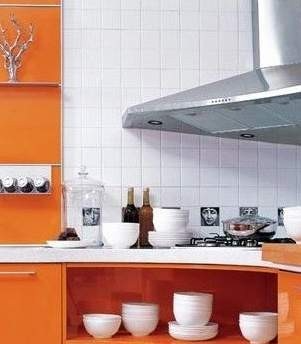
4. Cookware cleaning
If glassware like oil bottles is lightly stained, use tea leaves to clean it. For printed glassware, use tissue paper and avoid using detergent to prevent corrosion. If the grease is thick and has an odor, crush an eggshell and place it in a bottle. Add a small amount of warm water, cover tightly, and shake it up and down for about a minute to remove any remaining eggshell residue. Rinse thoroughly with clean water.
Chopping boards are prone to produce odor after use. Household vinegar can effectively clean odorous chopping boards. Mix two spoons of vinegar with 200 ml of warm water, and then place it on a cutting board covered with paper towels for 15 minutes. The dirt on the chopping board will be easily removed, the odor will disappear, and it also has a certain bactericidal effect.
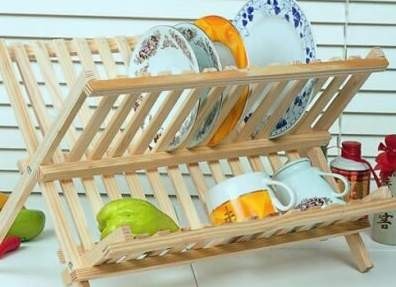
5. Microwave cleaning
Place a large bowl of hot water on the stove and boil it until a lot of steam is produced. Then use a double-effect scouring pad dipped in dishwashing liquid to clean the oil stains inside, and then wipe it dry with a wet and dry sponge rag respectively.
Kitchen windows are often contaminated by cooking fumes and are more difficult to clean than other glass.
When cleaning kitchen windows, first use a feather duster to remove dust from the inside and outside of the glass. Then, spray some glass cleaner on the glass and wipe it with a rag, starting from the outside and then wiping the inside. It will be spotless in no time.
If the glass is frosted with patterns, scrub it with an old toothbrush, rinse with clean water, and finally wipe it with a dry cloth.
. When cooking, oil often splashes onto the wall, which over time can form unsightly yellow spots.
Spray some detergent on the wall, place a paper towel over it, and wipe it after 15 minutes. This will easily remove the oil stains. Alternatively,
simply pour a small amount of detergent onto a damp cloth, wipe off the oil, and rinse with clean water.
For those difficult-to-reach areas between tiles, an old toothbrush can easily get the job done.
: Grease easily accumulates on gas stoves and range hoods.
If it's on the surface, wet a paper towel with detergent and cover the stain. Wait a while before cleaning, and it will be easily removed.
If it's inside, first remove the gas stove's frame and gently wipe it with a soft-bristled metal brush. Then, wrap it with a paper towel and spray it with detergent. Wait a while before cleaning again. For the oil filter and fan blades inside the range hood, remove them and soak them in diluted detergent. Once the grease
floats up, clean them with an old toothbrush.
. If it's made of plywood, simply wipe it with a rag dipped in all-purpose cleaner.
If it's made of solid wood or piano lacquer, be sure to wipe it with a hot towel to avoid damaging the surface.
A toothbrush can be helpful for difficult-to-reach areas like faucets and sink corners. If there's hard water buildup on your faucet, take a lemon slice, press firmly against the faucet spout, and twist it several times to easily remove it.
2. Has your refrigerator become grimy after long use? Wipe it with a sponge dipped in vinegar and a little dish soap. This not only removes stains but also acts as an antibacterial agent.
3. Place a paper towel on the tile, spray detergent on it, and let it sit for a while, just like applying a facial mask. The detergent won't spread everywhere, and the dirt will stick to it. Simply remove the toilet paper and wipe the tile once or twice with a clean cloth dipped in clean water. For heavily greased tiles, place a paper towel on them overnight, or use a cotton cloth instead of toilet paper and wipe with a damp cloth.
4. Got a hard-to-remove stain on your faucet? Rub a slice of fresh lemon in a circular motion a few times. A well-hydrated orange peel can also be a powerful stain remover. Rub the colored side of the peel against stubborn stains to easily remove them.
5. Soak a scouring pad in beer for a while and then wipe it against a stubborn stovetop for a sparkling clean. Alternatively, use leftover radish or cucumber scraps dipped in detergent and then rinse with clean water for a similarly effective stain removal effect.
Old stains on enamelware can be effectively removed with a brush and a little toothpaste.
Electroplated faucets darken and lose their luster over time, and soap and detergent are not ideal. The best method is to apply a small amount of flour to a dry cloth and repeatedly rub the faucet. Then, wipe it with a damp cloth, and finally with a dry cloth. This will restore the faucet to its original shine.
Rusted kitchen knives can be removed by scrubbing them with potato or radish slices dipped in a little fine sand.
Grease can be removed from gas stoves by rubbing the surface with leftover hot soup from cooking noodles. After a while, wipe it with a cloth and rinse with water.
Greasy kitchen floors can be effectively scrubbed with a mop and a little vinegar. The kitchen is the place in the house where dirt is most likely to accumulate, and most of the dirt is greasy and difficult to clean. Here are some decontamination methods for different kitchen utensils that you can try.
* Cupboards: If kitchen cupboards or other wooden furniture aren't cleaned regularly, they can become stained with grease. Adding a moderate amount of vinegar to clean water can be very effective.
* Exhaust Fans: Over time, grease can build up on the frame and blades of exhaust fans in the kitchen. While cleaning with alkaline water or detergents may be effective, it often leaves hands greasy and difficult to clean. Using sawdust is quick, easy, and highly effective.
1. Before cleaning and disassembling the exhaust fan, wash your hands and apply soap, leaving extra soap between your fingernails. Then wipe your hands clean.
2. After disassembling the exhaust fan, take some fine sawdust and use it with cotton yarn or your hands to wipe the dust until all the grease is removed from the fan components.
3. After removing the grease, rinse the remaining sawdust and cotton yarn from the components with clean water. Dry them and reassemble them. The exhaust fan will be as clean as new.
*Window screens: To clean greasy window screens in the kitchen, you can use a few heated thin batter to brush it on both sides of the screen several times. After more than 10 minutes, use water to brush off the batter and the grease on the screen will be cleaned. You can also use a lint-free cloth dipped in alkaline water to brush it repeatedly. After the grease is brushed off, brush it again with clean water. If these two methods are not clean enough in one go, repeat the original method until it is clean .
2. When using a single-handle faucet, it should be opened and closed slowly, and the double-handle faucet should not be closed too tightly, otherwise the water stop will fall off, causing it to be unable to turn off or stop the water.
3. The water outlet usually has a foaming device (also called a foamer, different faucets have different foamers). Due to water quality problems, the faucet often has a small amount of water after being used for a period of time. This may be because the foamer is blocked by debris. The foamer can be unscrewed and used with clean water or a needle to clear the debris.
4. The surface electroplating treatment of some brands of imported faucets is quite thick, but it also causes its fatal daily cleaning of household microwave ovens
First, unplug the power cord before cleaning.
The interior, front and back of the door, and the door opening can be cleaned with a soft cloth, warm water, and a mild detergent. Avoid using metal brushes or corrosive detergents. To clean the oven walls, use a cotton pad dipped in rubbing alcohol or strong liquor, as alcohol evaporates quickly and has antibacterial properties. Carefully clean the right mica sheet, as this is the microwave's heating port. The turntable and turntable bracket should be removed and cleaned separately. Alternatively, use rubbing alcohol or liquor, followed by repeated scrubbing with a damp cloth. If the glass turntable and collar are hot, wait until they cool before handling them.
If there is too much dirt accumulated on the microwave oven, you can fill a special container for microwave ovens with water, heat it for a few minutes, let the evaporated water moisten the stains in the oven, then wipe it off with wet paper, and then use detergent to completely clean the oil or alcohol. If it is a computer-controlled microwave oven, you should avoid wiping the membrane switch with a wet cloth.
To remove odors, you can add a drop or two of vinegar to a cup of water, put it on the turntable and heat it for one or two minutes to remove odors in the microwave. And when heating bread, steamed buns and other foods with relatively low water content in daily use, you should put half a bowl of water next to it. It is good for the freshness of the food and the use of the microwave oven. In addition, foods with strong acidity and alkalinity should also be avoided from heating as much as possible.
Home kitchen cleaning tips
(When cleaning the kitchen, it is recommended to use special cleaning cloths and detergents, and also prepare rubber gloves and other things. These cleaning products are generally available in home . )
Kitchen maintenance is a skill. Because kitchens are frequently used with water, attention must be paid to leaks and moisture prevention. Fire is also frequently used, so fire prevention is crucial. Smudges from cooking fumes are difficult to clean, so good ventilation and easy cleaning are crucial. Flooring: Marble and granite are commonly used natural stones for kitchen floors. These stones offer advantages such as durability, resistance to deformation, and excellent sound insulation. However, they have disadvantages such as high price, lack of water resistance, slippery behavior when wet, and poor heat absorption, making them unsuitable for kitchens in humid climates. Currently, artificial stone is available on the market, offering lower prices than natural stone and waterproof properties, making it a rising star in kitchen flooring.
Walling: Kitchen walls are best suited for materials that are easy to clean, stain-resistant, fire- and heat-resistant, and have a soft, aesthetically pleasing surface. Vinyl wallpaper, glossy wood panels, and wood treated or coated with a clear vinyl paint are all excellent choices. Currently, fire-rated plastic wall coverings and ceramic tiles are available on the market. Ceramic tiles are highly popular due to their diverse colors and patterns, which can liven up the visual experience.
□ Ceiling Materials: Fire and heat resistance are paramount when choosing a ceiling material, but resistance to staining and fading is also crucial. Fire-rated plastic wall coverings are a good choice, but they should be installed with ventilation and soundproofing. If installing a skylight in the kitchen, double-glazed glass is essential for safety. If lighting equipment is placed between the ceiling and the plastic layer, a translucent plastic layer can be used.
The kitchen floor is prone to grease and dirt. Before mopping, pour some vinegar on the mop to remove the grease.
Clean the gas stove head. A normal gas stove flame should be blue, but if the gas outlet is blocked by debris, the color of the flame will turn red. At this time, you can use a vacuum cleaner to suck up the debris at the burner, or use a toothpick to clean it.
If you notice any hard water buildup on your faucet, press the flat side of a lemon against the faucet spout and twist it several times to remove it.
Greasy kitchen screens can be frightening. Take an aluminum basin, put 100 grams of flour in it, and mix it with water to make a thin batter. Brush the batter onto both sides of the screen while it's still hot, spreading it evenly. After 10 minutes, brush it several times with a brush, then rinse with water. The grease will be gone.
How to wash kitchen equipment
Using plastic wrap to clean kitchen windows is quick and effective. Kitchen windows are often greasy due to cooking fumes, making them incredibly difficult to clean. Don't worry! With just a few sheets of plastic wrap, cleaning kitchen windows is no longer such a headache! Simply spray the windows with cleaner and cover them with plastic wrap. After 10-15 minutes, remove the plastic wrap and gently wipe the windows with a dry cloth. Your greasy windows will sparkle like new! Give it a try!
Cleaning the gas stove
I swear, this is my personal experience. After using it, I felt... it was... it was... amazing. I believe everyone has a gas stove at home! Every time you cook, there's always some smoke. So unless you're diligent and remember to wipe it down every day after cooking, over time... your stove will gradually become covered in yellow, greasy dirt. Every time you scrub it clean, even with a kitchen magic wand and a cucumber, you still have to scrub it vigorously, but it still might not get it completely clean, right? Especially if your gas stove has been around for years and you only clean it once in a while, then cleaning it is a nightmare! I remember that after my mother's health worsened, the chores of cleaning our kitchen fell on me. Every time, I had to battle those stubborn grease for hours, exhausting myself but still unable to completely eradicate it. But... this time... everything was different! Simply use any type of flour—low-gluten, medium-gluten, or high-gluten—and a dry sponge. Gently pour the flour onto the stovetop and gently scrub it with the sponge to easily remove any grease. If you haven't scrubbed it in a while, you'll need to apply a little extra pressure! It's gentle on your hands and the stovetop, and afterward, it feels like a brand new stovetop. It's no longer sticky, but smooth and shiny, not greasy at all.
Over time, dirt and grease can accumulate in bathroom or kitchen sinks. Pouring hot, concentrated salt water into the sink not only removes the dirt and grease, but also reduces odors.
Pour unused hot water down the sink drain to flush away the dirt and grease. Pour coffee grounds down the sink drain to remove odors and grease.
[Teapot]
Besides salt, baking soda is also a great way to remove tea stains! Add a suitable amount of baking soda to water and soak the teapot for a while. This will naturally remove the stains. For more severe stains, wiping directly with a damp cloth and baking soda is very effective.
[Glasses]
Use a sponge with a small amount of baking soda to wipe any stained glasses. They'll instantly sparkle and sparkle! (This also works on kitchen windows, right?)
[Iron Pan]
The bottom of an old iron pan is often covered in burnt grease, making it difficult to clean. Sprinkle some baking soda on the grease, add a little water, and let it sit for about 30 minutes before scrubbing it with a brush. This will effectively remove the grease.
[Dining Table]
After eating, the dining table will inevitably be left with greasy stains, which are difficult to clean thoroughly even with a hot rag. If you pour baking soda on the table and wipe it back and forth with a clean rag several times, the grease will be completely removed.
[Electrical Appliances]
Kitchen appliances can easily become greasy, so use an old toothbrush and baking soda to easily remove stains. (The range hood is always a highlight of every cleaning, so go for it!)